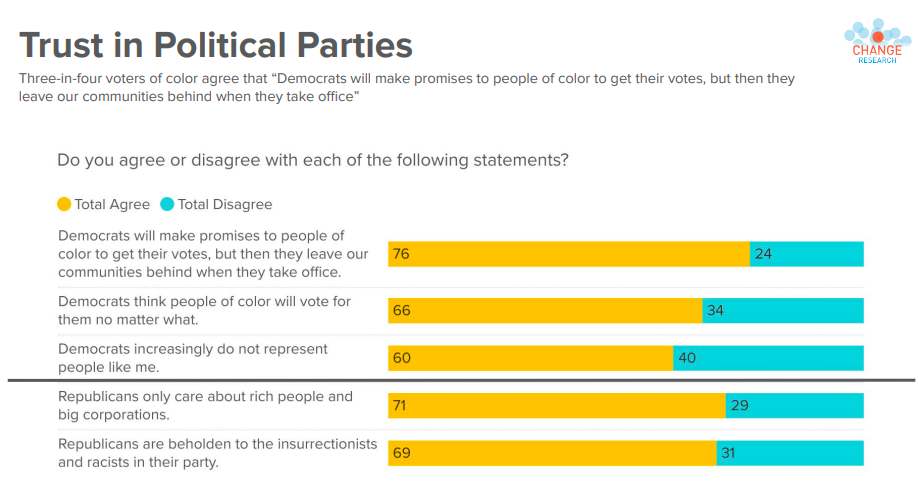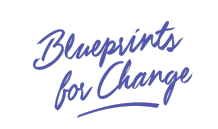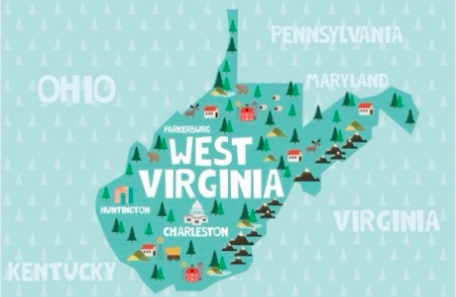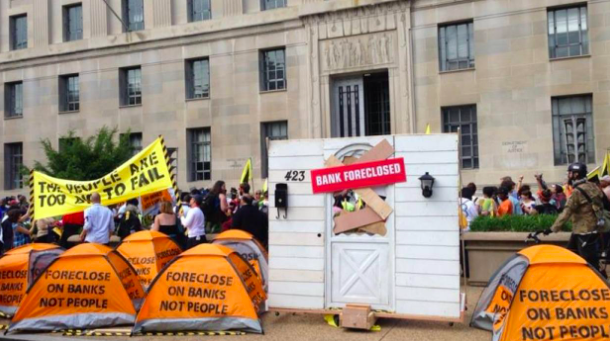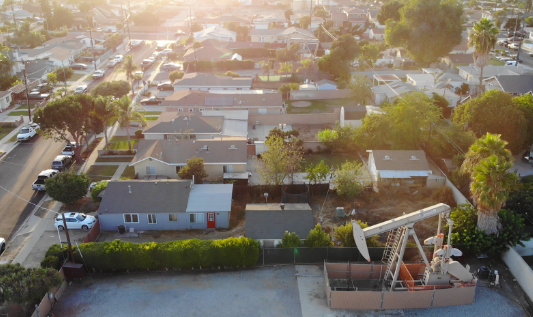Resources
Search below for resources covering the intersection of climate engagement, social science and data analytics.
RESULTS
Building Resilient Organizations
There are things we can and must do to shift movements for justice toward a powerful posture of joy and victory. Existing movements for justice are often fractured and have underdeveloped ideologies—mostly because of historical oppression of those movements by the government. To improve the strengths of contemporary movements for justice, we need resilient organizations, which are structurally sound, ideologically coherent, strategically grounded, and emotionally mature. Resilient organizations need committed leaders and thoughtful hierarchies; well-developed, clear ideologies; strategies and theories of change that guide the organization; and emotional intelligence, understanding that the establishment and re-establishment of connection, meaning, and belonging are the center of the work.
What I learned building self-managing teams of volunteers at Sunrise Movement
Here are some tactics to use to successfully build a distributed voter contact program. In this resource, the Sunrise Movement’s former distributed director shares their lessons learned. Lesson one: Make time for a team launch, which is critically important for setting up a team that will work together effectively, improve over time, and contribute to the members' growth and learning. Lesson two: Create a team charter to serve as a reference during team calls, when orienting a new member, at a relaunch event, or whenever it's helpful to review the team's purpose and norms. Lesson three: Make norms explicit in order to protect against the assumption that everyone on the team enters with the same background, culture, and experiences and should be able to "read our minds" and guess our preferred ways of working together. The team launch and building the charter together creates commitment to the team and work outcomes, motivation for the work ahead, a sense of belonging, and shared ownership over team processes and outcomes.
Using Qualitative & Quantitative Research to Understand Rural Communities of Color
Rural voters of color need to see and hear from their local elected officials and candidates often, and not just before an election. They aren’t looking for pie in the sky plans; they want leaders to execute and to see results. When leaders deliver on priorities, it needs to be clear WHO delivered to get credit and build trust in the electoral process to make change. Unbiased, accessible candidate guides may empower these voters to participate. Motivating messages should reinforce their power to change things at the local level and reinforce community pride and the value of their opinions. We are not reaching these voters if we are not on social media and radio. This resource used both in-depth interviews and large-N surveys of Black, Latinx, and indigenous voters and nonvoters.
Grassroots Guide: Navigating Turnover In Activist Groups
There are some key strategies that grassroots groups can employ to avoid dissolving. These are especially helpful for student-run groups, which can struggle to pass along the group's resources and knowledge to the next generation of student organizers, as many lack a permanence of structure. These strategies include: support and guide new members via training and upskilling; build institutional memory; create a blueprint for group operations; have strong onboarding and outboarding processes; institutionalize involvement; engage with the student association/body; get teachers to support your campaign(s); outline institutions in your school; get support from staff unions; and create solidarity with staff causes. This report describes these strategies in detail. Some specific challenges by student groups have included: divestment organizers were concerned about groups who won and didn’t know where to go from there; groups have been struggling to navigate online organizing; there are ongoing concerns related to general turnover and capacity when students graduate (particularly those who have been members of a group for a while; a lack of support from former members leads to more energy and time needed to restart after a high rate of turnover; anger towards the school administration leads to forgetting about turnover periods, thus the workload for the next semester is larger.
Grassroots Guide: Making Your Activism Accessible
There are some key ways for activists to make their spaces more accessible—to ensure everyone is welcome and encouraged to join movements in whatever way they can. These include: understanding the right choice of location for events/actions; meeting attendee needs; creating space for every identity; employ proper pandemic safety measures. For virtual events and meetings, consider preparation before the meeting and use specific in-meeting tactics. Regarding communications, use clear language and modes of communication that all potential audiences can understand. Write image descriptions. Also, be sure to foster a group culture dedicated to accessibility.
Building long-lasting grassroots power requires centering concrete issues and the humanity of individuals you’re organizing. Many organizations in West Virginia are cultivating organizers, building organizations that can sustainably organize local communities according to their needs for years to come, incorporating mutual aid, and more, in an effort to win and wield political power. In this article, The Forge contributor Mat Hanson discussed organizational strategies with multiple people involved in grassroots power building in West Virginia: Katey Lauer, co-chair of West Virginia Can’t Wait; Nicole McCormick, a founding member of the West Virginia United caucus and rank-and-file leader in the successful teacher’s strike; Dr. Shanequa Smith of Restorative Actions and the Black Voters Impact Initiative; and Joe Solomon, the co-founder and co-director of Solutions Oriented Addiction Response (SOAR), a volunteer-based organization that advocates for harm-reduction strategies to the opioid crisis.
The Case for Rupture
Ruptural moments are key to long-term movement victories. Ruptural moments by themselves rarely lead to substantive changes in people’s material conditions or the dismantling of the status quo; they need to be situated within a dynamic movement ecosystem. In a ruptural moment, thousands or hundreds of thousands of people hit the streets. Second, participants are willing to engage in a huge escalation of risk. Third, ruptural moments open a window into a change in thinking — opening the eyes of a society to the fact that a dictatorship is fragile or that Indigenous sovereignty must be respected or that Black folks have a different lived experience than white folks. In other words, in changing how space or public order works, ruptural moments contest the story of the dominant culture. Movement organizers can create ruptural moments by working for months in a disciplined way to achieve the scale necessary for something major to happen, or by a smaller group of organizers attempting something bold, enabling it to scale as others are captivated by the boldness of the tactic or demand and launch copycat actions or undergird the movement. And sometimes, unexpected events just happen that create ruptures.
Growing Voters: Building Institutions and Community Ecosystems for Equitable Electoral Participation
There are some key ways to improve on the current model for how to engage young people to vote. This report introduces and details a new framework for how institutions and communities can prepare young people—starting long before they turn 18—to become active and informed voters. There are profound inequities in access to civic learning and engagement opportunities for young people. Implementing a “growing voters” approach involves engaging potential (young) voters year-round, building culture of the importance of civic participation, contacting potential voters even before they turn 18, targeting young people who even haven’t voted before, and doing so everywhere (national and locally, not just in competitive electoral districts). This report describes these tactics in detail, for how to produce a long-term increase in young people voting.
Historic Environmental Justice Victory: City of Los Angeles is creating a pathway to phase out existing oil and gas wells
Residents, community organizations, and health care practitioners organized for over a decade to protect the health of residents on the front lines of urban oil extraction in L.A. In January 2022, the Los Angeles City Council voted unanimously to draft an ordinance to prohibit all new oil and gas drilling and to phase out existing drilling operations throughout the City of Los Angeles. This resource is based on an interview with Wendy Miranda (she/they), a community leader with Communities for a Better Environment (CBE) and resident, about the historic victory. The organizing strategy to get this victory involved various lobbying efforts, rallies, press conferences, petition collections, a wide range of community/organization endorsements, phone banking, and social media outreach. Overall, frontline residents providing public comments and sharing their personal experiences were some of the strongest and most powerful tactics. STAND L.A. will continue to be part of the process to help draft an ordinance and direct the City of Los Angeles on how to lead a genuine community participation process. Miranda shares that this victory is proof that frontline communities can lead the change toward a just, equitable transition to a clean energy future.
What’s Your Power Analysis?
This new series at The Forge will engage organizers with a deceptively simple question: what’s your power analysis? Powerful actors and institutions are creating and purposefully maintaining unjust political and economic systems for their own benefit. This article series aims for sharper and more shared approaches and language across our movements for describing, measuring, and analyzing power. In this series, this author will talk to organizers and movement leaders — including Doran Schrantz of Faith in Minnesota, Andrea Mercado of Florida Rising, leaders at the New Georgia Project Action Fund, and others from across the progressive movement — about the power analysis that guides their work and their organizations, the power they’re trying to build and exercise, how it’s going, and how they know.
Pagination
- Previous page
- Page 3
- Next page


